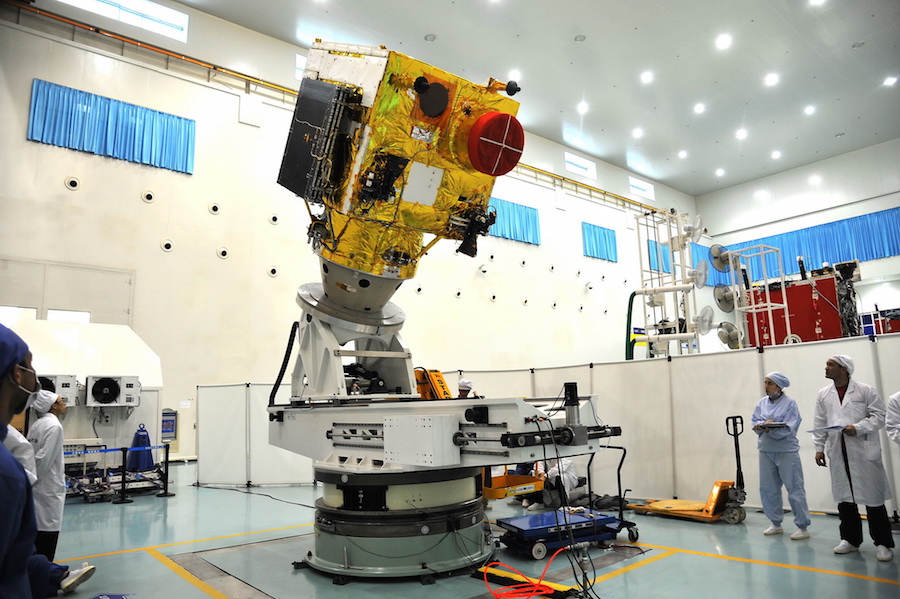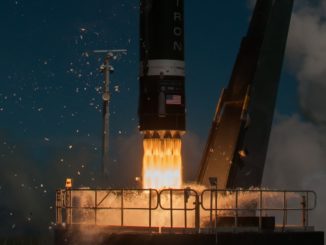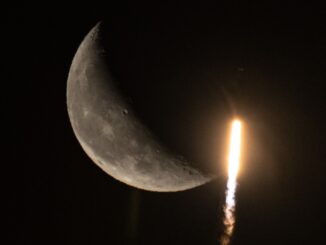
A Chinese Long March 2D rocket launched Venezuela’s second Earth-observing surveillance satellite Monday, adding a new space-based reconnaissance asset the country’s government says it will use to aid security forces, emergency responders, farmers, and health professionals.
The two-stage, 134-foot-tall (41-meter) Long March 2D booster took off at 0413 GMT (12:13 a.m. EDT) Monday from the remote Jiuquan space base in the Gobi Desert in northwest China, according to China Great Wall Industry Corp., the government-owned company chartered to sell Chinese rockets and satellites on the global market.
The second Venezuela Remote Sensing Satellite, or VRSS 2, was released from the Long March 2D’s second stage around 13 minutes after liftoff, prompting cheers and applause by dignitaries and government officials during a live broadcast of the launch on Venezuelan state television.
Ground controllers confirmed the Long March 2D placed the VRSS 2 satellite into the correct orbit, and officials declared the launch a success.
U.S. military tracking data indicated the satellite was circling Earth at an altitude of around 400 miles (645 kilometers), in an sun-synchronous-type orbit inclined 98 degrees to the equator.
The VRSS 2 spacecraft weighs about one metric ton, or 2,200 pounds, and is designed for a five-year lifetime, according to China Great Wall Industry Corp. The satellite was manufactured by DFH Satellite Co. Ltd., a subsidiary of the state-owned China Aerospace Science and Technology Corp.
More than 100 Venezuelan engineers participated in the design and assembly of the satellite in China, officials said.

Under heavy criticism for a deepening humanitarian, financial and political crisis, the Venezuelan government touted Monday’s launch as “an exercise in the sovereignty, independence and dignity of the Venezuelan people.”
Venezuela and China have partnered on three satellite projects to date. The Venesat 1 communications satellite launched in 2008, and the VRSS 1 remote sensing craft was placed into orbit in 2012, both by Chinese rockets.
“Without China’s cooperation, none of our space programs would have been possible,” said Hugbel Roa, Venezuela’s minister for university education, science and technology. “Today we can say that our people are moving forward to become a power in the field.”
The Venezuelan government has not disclosed the cost of the VRSS 2 satellite, but the VRSS 1 mission launched five years ago cost approximately $145 million.
Officials named the VRSS 2 satellite Antonio José de Sucre, after a Venezuelan independence leader. Venezuala’s two earlier satellites built and launched in China, the Venesat 1 communications craft and the VRSS 1 imaging platform, were named for Venezuelan revolutionaries Simón Bolívar and Francisco de Miranda.
VRSS 2 carries a high-resolution camera with a maximum resolution of around 3 feet, or 1 meter, an improvement over the capability of the VRSS 1 satellite. The new spacecraft also hosts an infrared camera that can take broad, medium-resolution pictures of Earth at night, resolving features bigger than a basketball court.
The satellite’s orbit will allow it to image the same part of the planet once every four days, officials said.
Email the author.
Follow Stephen Clark on Twitter: @StephenClark1.



